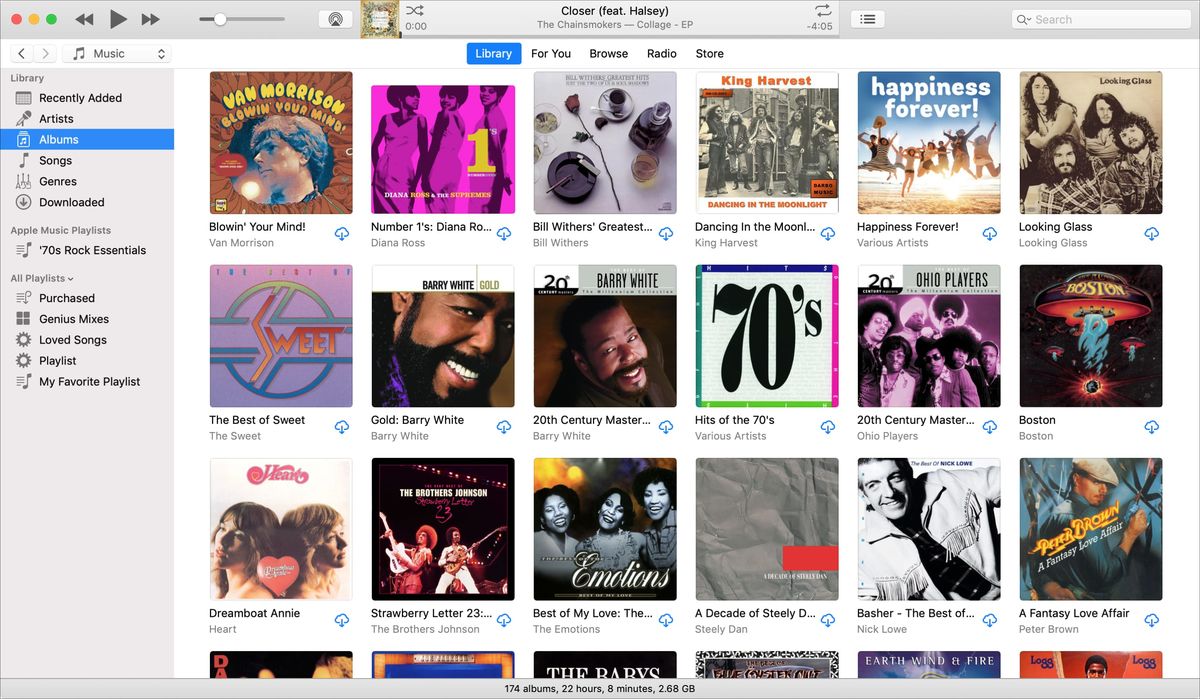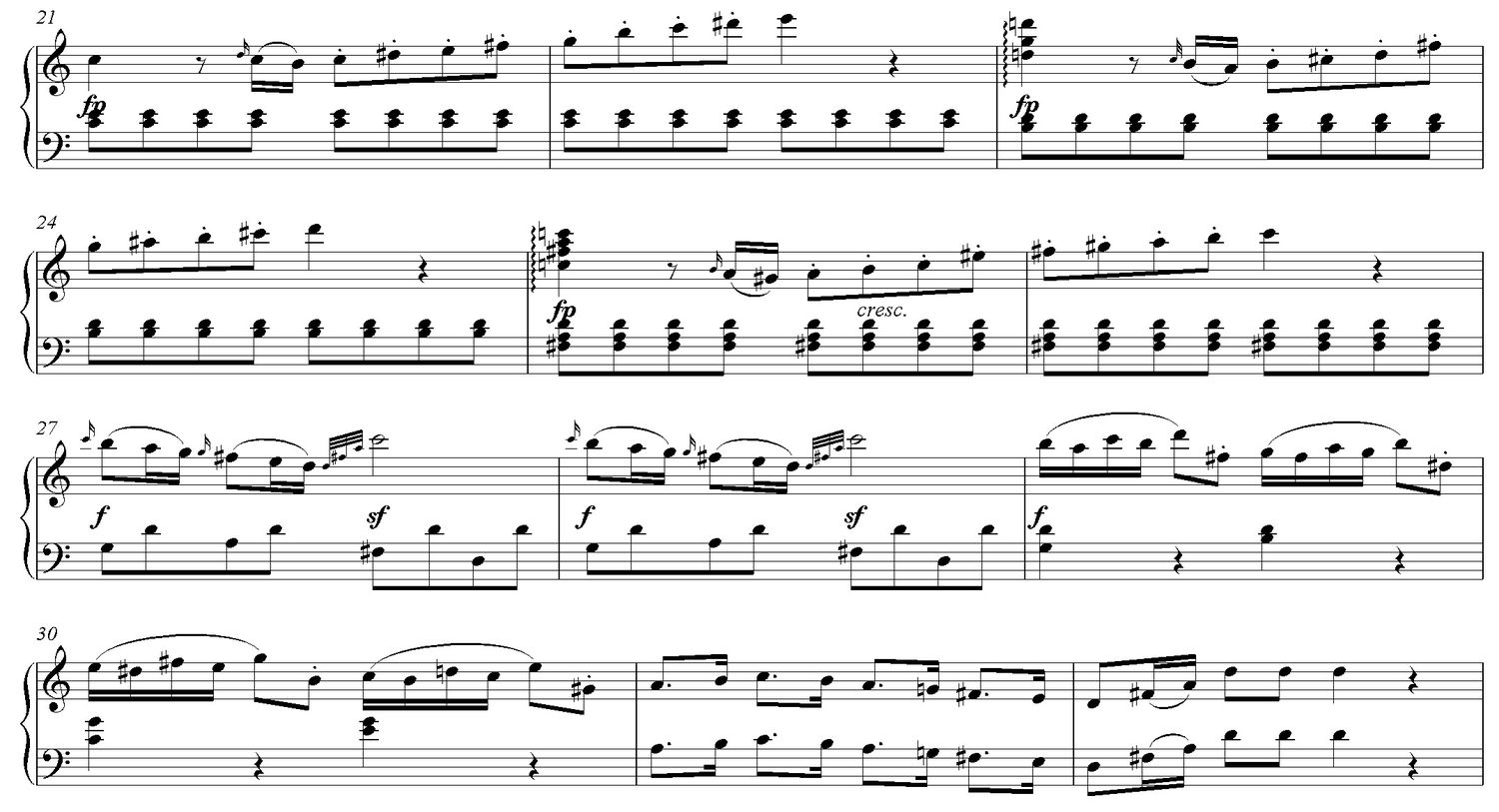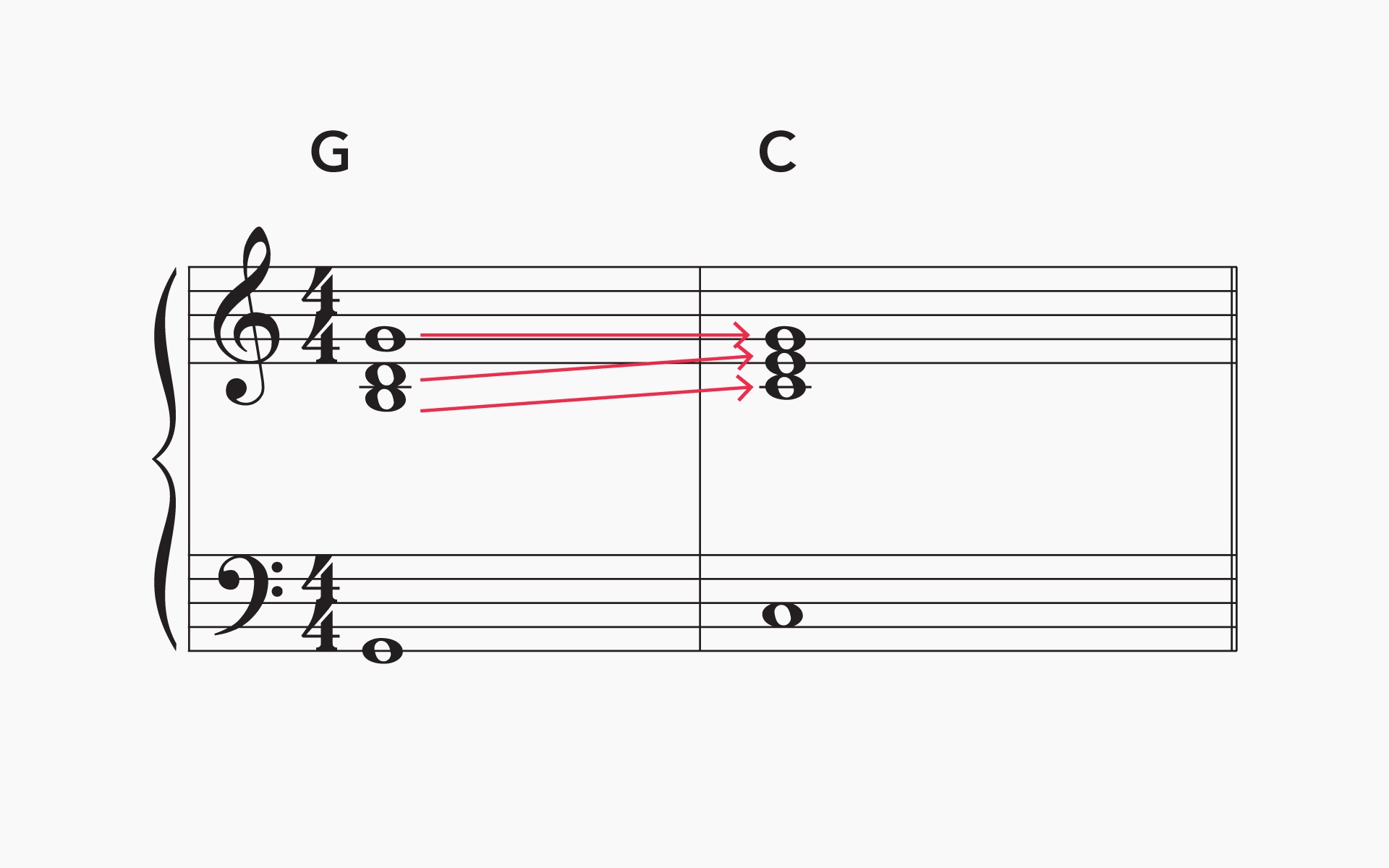Home>Production & Technology>Music Theory>How To Remember Intervals Music Theory


Music Theory
How To Remember Intervals Music Theory
Published: January 29, 2024
Learn how to easily remember intervals in music theory and improve your musical understanding. Essential tips and techniques for mastering music theory.
(Many of the links in this article redirect to a specific reviewed product. Your purchase of these products through affiliate links helps to generate commission for AudioLover.com, at no extra cost. Learn more)
Table of Contents
Introduction
Understanding intervals is a fundamental aspect of music theory. Whether you’re a musician, music student, or just a music enthusiast, having a solid grasp of intervals can greatly enhance your understanding and appreciation of music. Intervals refer to the distance between two notes, and they play a crucial role in melody, harmony, and chord progressions.
However, memorizing intervals can be a daunting task. With so many different types and variations, it’s easy to feel overwhelmed. But fear not! In this article, we’ll explore techniques and strategies to help you remember intervals and make the learning process more enjoyable.
By incorporating mnemonic devices, associating intervals with familiar songs, and practicing with repetition, you can strengthen your interval recognition skills. It’s all about finding the approach that works best for you and making the learning experience engaging and effective.
So, whether you’re a beginner starting to delve into music theory or a seasoned musician looking to brush up on your skills, let’s dive into the wonderful world of intervals and discover how to remember them with ease.
Understanding Intervals in Music Theory
In music theory, intervals are the building blocks of melody and harmony. They determine the distance, or pitch, between two notes. Intervals are named based on the number of letter names and the distance between them. They can be categorized as either melodic intervals (heard one after the other) or harmonic intervals (heard simultaneously).
Intervals are traditionally measured by the number of letter names they encompass, including both the starting and ending notes. For example, the interval between C and G is a fifth because it spans five letter names (C, D, E, F, G). Additionally, intervals are also classified by their specific quality, which refers to the number of half steps or semitones between the two notes. The quality of an interval can be major, minor, augmented, or diminished.
Understanding the relationship between intervals is crucial to reading and interpreting sheet music, identifying chords, and composing harmonies. It allows musicians to make informed decisions about the emotional impact and coloration of their music. For example, a major third interval often conveys a sense of brightness, while a minor seventh can evoke a much darker and more dissonant sound.
It’s essential to familiarize yourself with the different intervals and their unique characteristics. Major and perfect intervals are considered consonant and typically sound pleasing to the ear, while minor, augmented, and diminished intervals create varying degrees of tension and dissonance.
By understanding intervals and their qualities, you can better comprehend musical patterns, create harmonies, and improvise melodies. It’s a vital skill for any musician looking to deepen their understanding and proficiency in music theory.
Now that we’ve established the importance of intervals in music theory, let’s explore techniques to help you remember and internalize them more effectively.
Techniques to Remember Intervals
Memorizing intervals can seem like a daunting task, but with the right techniques, it can become much more manageable and even enjoyable. Here are some strategies to help you remember intervals more effectively:
- Visualize the Keyboard or Staff: When you think of an interval, picture it on the piano keyboard or musical staff. This visual representation can help you visualize the distance between the notes and make it easier to remember.
- Mnemonic Devices: Mnemonics can be powerful memory aids. Create phrases or sentences using the first letters of each interval. For example, to remember the ascending order of the diatonic intervals, you can use “Do giraffes become eagles after lunch?” – representing the distances of a unison, a second, a third, a fourth, a fifth, a sixth, and a seventh, respectively.
- Interval Patterns: Look for patterns in the intervals. For example, major and minor intervals have different semitone patterns. Major intervals tend to be larger, while minor intervals are smaller. Recognizing these patterns can help you quickly identify intervals.
- Relative Pitch Training: Develop your relative pitch skills by practicing identifying intervals in songs or melodies. Start with simple songs and gradually work your way up to more complex pieces. This exercise will help you internalize the sound and characteristics of each interval.
- Interval Ear Training Apps: Utilize technology to assist you in interval ear training. There are numerous apps available that provide exercises and games specifically designed to improve your interval recognition skills. Take advantage of these tools to make the learning process more interactive and engaging.
- Grouping Intervals: Group intervals with similar characteristics together. For example, the perfect fourth and perfect fifth intervals are both considered perfect intervals and have a distinct and stable sound. By grouping them together mentally, you can simplify the process of memorization.
- Practice, Practice, Practice: Like any skill, repetition and practice are essential. Dedicate regular time to practice interval recognition exercises. The more familiar you become with intervals, the easier it will be to remember them.
Remember to be patient with yourself and celebrate small victories along the way. Learning intervals takes time and consistent effort. With perseverance and the right techniques, you’ll gradually become more adept at recognizing and remembering intervals in your musical journey.
Using Mnemonics to Memorize Intervals
Mnemonics can be incredibly useful when trying to memorize intervals in music theory. Mnemonics are memory aids that use associations, acronyms, or rhymes to help recall information more easily. Here are some mnemonics you can use to remember intervals:
- Music Alphabet: Use the music alphabet (A, B, C, D, E, F, G) as a starting point for creating mnemonics. For example, to remember the ascending order of major intervals, you can use “All Big Cats Don’t Eat Fish” – representing the intervals of a second, third, fourth, fifth, sixth, and seventh, respectively.
- Familiar Phrases or Songs: Associate intervals with familiar phrases or songs that have the same intervallic relationship. For instance, the first two notes of the song “My Bonnie Lies Over the Ocean” form a major second interval. By linking intervals to well-known tunes or phrases, you can utilize your existing musical knowledge to aid in memorization.
- Visual Representation: Create visual images or drawings to represent intervals. For example, for a minor third interval, you can visualize a small hill or a lowercase “m” on its side. By connecting the visual representation with the sound of the interval, you can reinforce the memory.
- Word Association: Associate words or concepts with specific intervals. For example, you can associate the major seventh interval with the word “gravity” to represent its dissonant and downward-pulling sound. This technique allows you to connect the meaning of a word or concept with the characteristics of an interval.
- Grouping by Similarity: Group intervals with similar characteristics together and create mnemonics for each group. For example, you can create a mnemonic for the perfect intervals (unison, fourth, fifth, and octave) such as “Perfect People Feel Outstanding” to remember the order of these intervals.
Experiment with different mnemonics and find the ones that resonate with you the most. Remember that the purpose of mnemonics is to make the learning process more enjoyable and memorable. By incorporating these memory aids, you’ll find it easier to remember intervals and apply them in your musical endeavors.
Associating Intervals with Familiar Songs
One effective way to remember intervals in music theory is to associate them with familiar songs. By linking intervals with melodies you already know, you can leverage your existing musical memory to aid in memorization. Here are some techniques for associating intervals with familiar songs:
- Identify Songs with Different Intervals: Listen to various songs and identify the intervals present in each melody. Start with simple songs and gradually move on to more complex pieces. By actively listening and analyzing the intervals, you can start recognizing their unique characteristics and sounds.
- Create a Song Catalog: Create a catalog of songs categorized by different intervals. For example, collect songs that feature a major third, perfect fifth, or minor seventh. As you encounter new songs, add them to your catalog to expand your repertoire of interval associations.
- Find Intervalic Patterns: Look for patterns in songs that use specific intervals. For example, “Somewhere Over the Rainbow” includes a perfect fourth interval in the opening phrase. By recognizing patterns like this, you can develop a deeper understanding of how intervals are used in music.
- Sing Intervals: Sing or hum intervals while thinking about the corresponding songs. Pay attention to how the intervals feel and sound as you produce them vocally. Singing the intervals helps reinforce your understanding and internalization of their distinctive qualities.
- Compose with Intervals: Use the intervals you’re trying to remember as building blocks in your own compositions. Experiment with different interval combinations and melodies. Creating original music using intervals can solidify your understanding and make the learning process more personal and meaningful.
Remember that the goal is to associate the intervals with songs that are easily recognizable to you. The more familiar and ingrained the melodies are in your memory, the easier it will be to recall the corresponding intervals. With practice and exposure to a variety of songs, you’ll develop a strong foundation for remembering intervals effortlessly.
Applying Repetition and Practice
Repetition and practice are paramount when it comes to remembering intervals in music theory. By dedicating time to focused practice, you can reinforce your interval recognition skills and increase your proficiency. Here are some tips for applying repetition and practice effectively:
- Interval Recognition Exercises: Incorporate interval recognition exercises into your daily practice routine. Use online resources, apps, or even a musical instrument to play intervals and identify them by ear. Start with simple intervals and gradually work your way up to more complex ones.
- Flashcards: Create flashcards with different intervals on them. Practice identifying the intervals quickly and accurately. Repeat this exercise regularly to reinforce your knowledge and improve your response time.
- Sight Singing: Practice sight singing using exercises that incorporate various intervals. By actively engaging with intervals through singing, you develop a stronger connection and familiarity with their sounds and sensations.
- Interval Singing: Practice singing intervals starting from a given note. Sing ascending and descending intervals, focusing on accurately reproducing the pitches and recognizing the distance between them.
- Interval Dictation: Develop your listening skills by practicing interval dictation. Listen to a series of intervals and try to notate them on paper. Start with a smaller range of intervals and gradually increase the difficulty as you progress.
- Interval Training with a Partner: Find a musical partner or teacher and practice interval recognition together. Take turns playing intervals on an instrument or singing them, and challenge each other to identify them correctly.
- Gradual Expansion: Begin with intervals that are easier to distinguish, such as the perfect fifth or the octave. As you become more comfortable, gradually introduce intervals that have more subtle differences, such as the minor second or the augmented fourth.
Consistency is key when it comes to repetition and practice. Set aside dedicated practice time in your schedule and make it a priority. Embrace the process and be patient with yourself as you work towards improving your interval recognition abilities. With regular practice, you’ll notice significant progress over time.
Remember that practice should be focused and deliberate. Avoid mindless repetition without paying attention to your accuracy and understanding. By actively engaging with intervals and consciously working on your skills, you’ll make the most out of your practice sessions and bolster your ability to remember intervals effectively.
Conclusion
Understanding and remembering intervals in music theory is crucial for musicians and music enthusiasts alike. While it may initially seem intimidating, there are various techniques to help you internalize and recall intervals more effectively. By using mnemonics, associating intervals with familiar songs, and applying repetition and practice, you can strengthen your interval recognition skills and deepen your understanding of music theory.
Using mnemonic devices can provide a creative and memorable way to associate intervals with phrases, songs, or visual representations. Mnemonics help solidify your memory and make the learning process enjoyable. Additionally, associating intervals with familiar songs taps into your existing musical knowledge, creating a strong connection between the sound of the interval and its corresponding melody.
Repetition and practice play a vital role in mastering intervals. Regularly engaging in interval recognition exercises, sight singing, and interval dictation will enhance your ear training and bolster your confidence in identifying intervals accurately. With consistent practice, you’ll become more proficient in recognizing intervals and applying them in your musical endeavors.
Remember, the key to success lies in finding techniques that work best for you. Experiment with different approaches and adapt them to suit your learning style. Embrace the journey of learning intervals, celebrate your progress, and continuously challenge yourself to expand your knowledge.
By developing a solid understanding of intervals and using the techniques shared in this article, you’ll gain a deeper appreciation for the inner workings of music and unlock new possibilities in your musical expression. So, embrace the adventure of exploring intervals and let the world of music theory expand before your eyes and ears!











